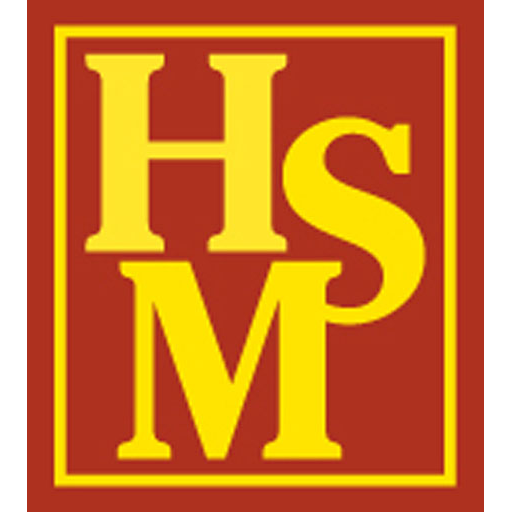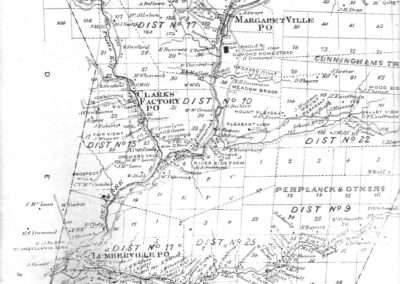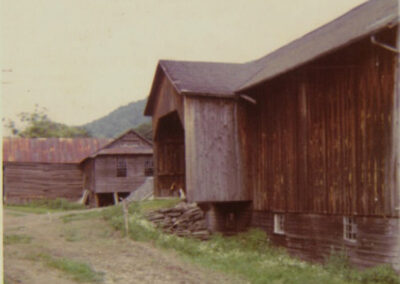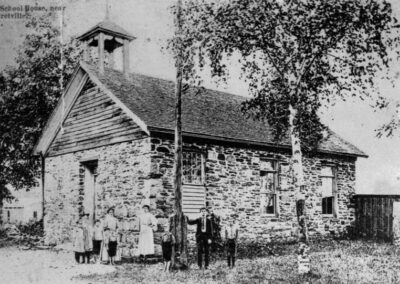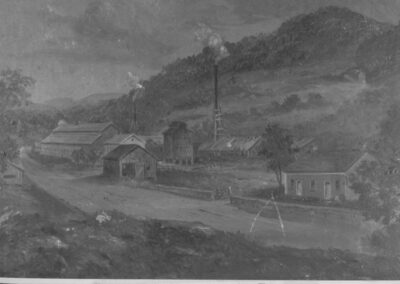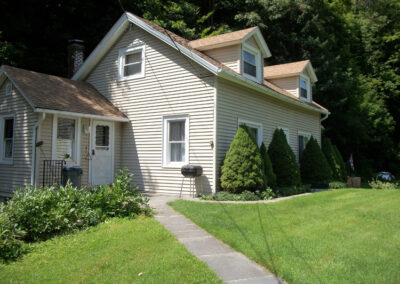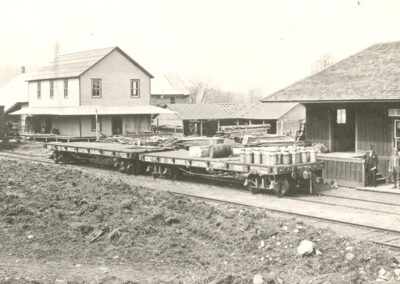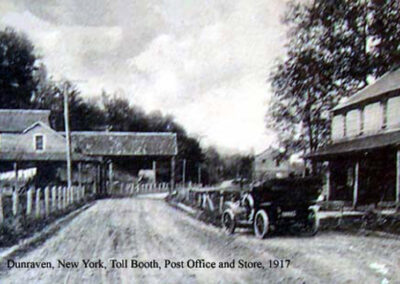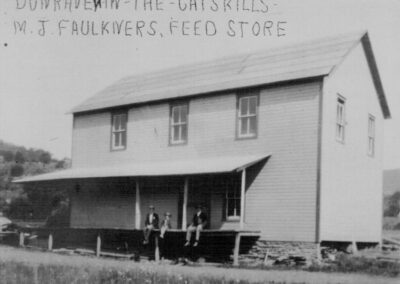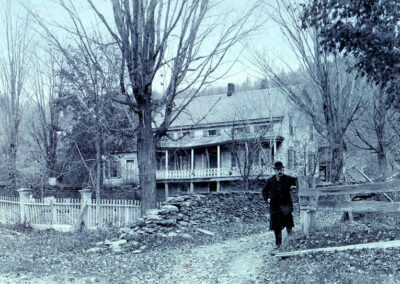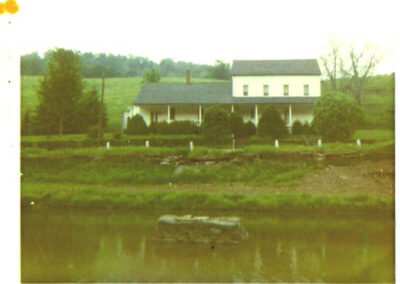Dunraven (Clark’s Factory)
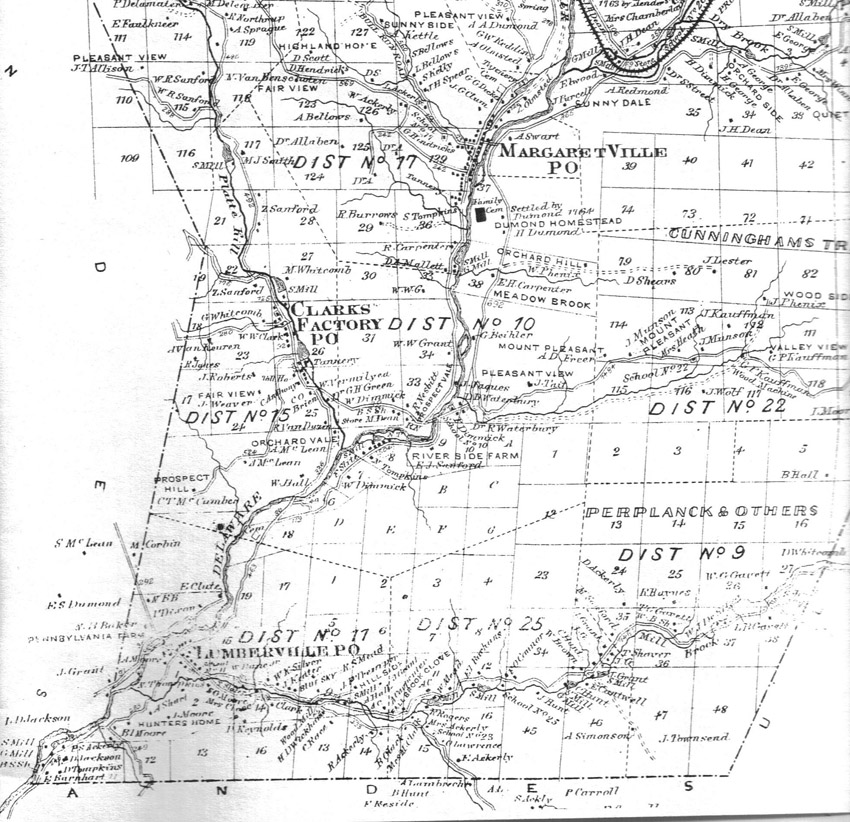
The Dunraven we know today is a hamlet of residences, with a small farm and a NY State Police barracks. But it was once a thriving industrial center known as Clark’s Factory after a family that ran a tannery and several other enterprises there.
In 1786, John Grant and his family emigrated to Middletown from Connecticut via Duanesburgh, NY. They built a house which still stands along County Road 3. The 1880 Munsells History of Delaware County tells us that “Colonel” Grant was the first postmaster of Middletown and held that post for 40 years. “The town meetings were held at his home for many years, the draft for the War of 1812 took place in the same building, and the broad meadow near was used for the general training of the militia. At these general trainings the tubs and pails of whiskey punch were used so freely that the sham fights usually turned out to be real fights before the day was over.”
An 1817 map of the proposed route of the Delaware & Ulster Turnpike shows Grant’s, Major Vanwagenen’s, and G. H. Sands’ residences along the East Branch of the Delaware River, as well as a store. By 1820, the stone school was built in this area, District 10, reportedly to replace two earlier wooden ones that had burned. Rebuilt in 1862, it remains a historic landmark. There was also a schoolhouse, District 15, that was established some time later further west on the turnpike. In 1917 it had 26 students. The little school still stands, though it has been re-situated on the lot and made into a residence.
The 1817 turnpike map shows several buildings in a second cluster, below the confluence of the Plattekill and Canada Hollow streams, including “Smith & Schultz’s Lether Factory and Store.” It had succeeded an 1811 tannery built by Abram Shults (sp?) to take advantage of the dense hemlock forests all around. The hemlocks were cut down and stripped of their tannin-rich bark which was used to turn cow hides into leather, a material used for everything from horse harnesses to boots. The stream was dammed to provide a steady supply of water for this process.
Other early settlers were Samuel, Jackson and Elkanah Smith, who as young men in 1804 emigrated from Westchester County and helped develop this area of Middletown. Samuel, “a farmer, inventor, tanner, builder and millwright . . . owned a large farm, a sawmill, grist mill and tannery, and at one time owned 1,000 acres of land in Delaware County,” according to the Smith family genealogy. The handsome house he built in 1856 was acquired by Jane Burns McMurray in 1874 and remains in family hands.
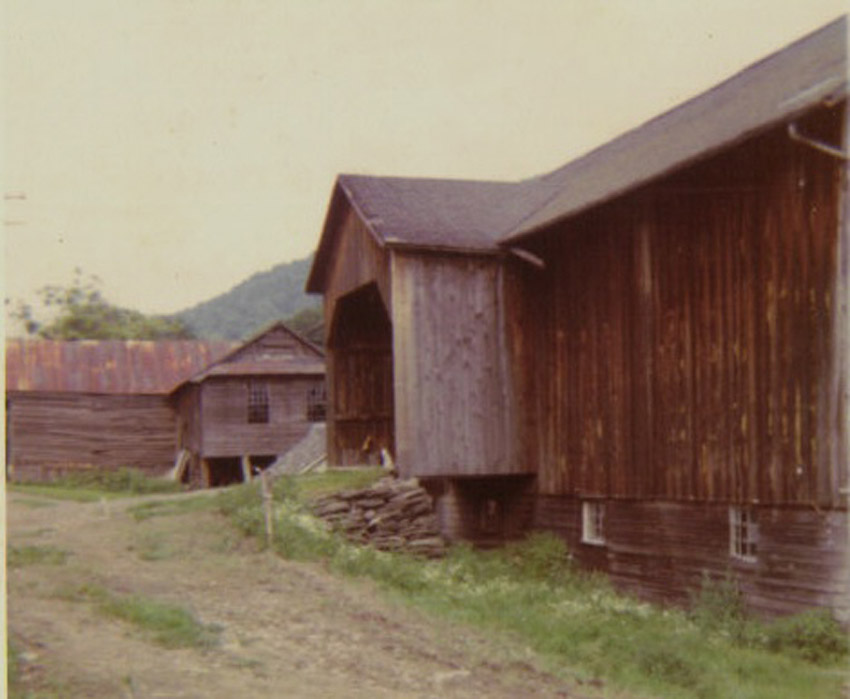
In the 1840s Dr. Adam Clark, a physician, relocated from Connecticut and built a large tannery where now (2022) the John McMurray and Schebesta residences are. The main tannery was 220 feet long. There was a 30×90-foot roll house and an expansive storage yard for cords of bark provided by area farmers and lumbermen. Hides were brought on horse drawn wagons from Kingston, having been shipped up from South America by boat.
Clark and his four sons, Egbert, Henry, George and Wheeler, helped run the tannery, along with a store, a boarding house and several tenant houses on Jones Hollow Road where laborers lived. The 1850 census shows 32 tannery workers, natives of Ireland, living in the boarding house. Clark’s Factory also had two hotels. Four-horse teams on the Kingston-Delhi stage coach line were switched in Clark’s Factory.
The tannery ceased operations in the early 1870s, but the hamlet retained the name Clark’s Factory until it was changed to Dunraven, for reasons that are unclear. By the time the Delaware & Eastern Railroad built a station near the Stone School in 1907, the community was known as Dunraven.
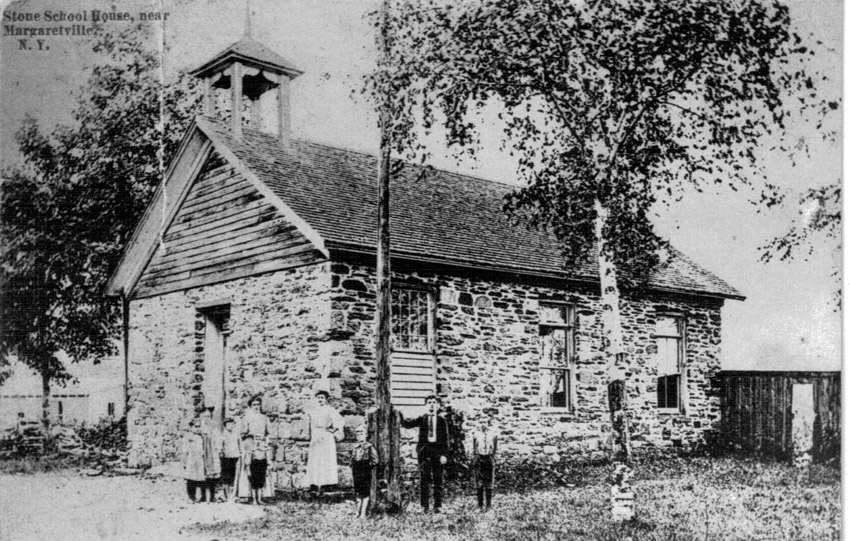
In the early part of the 20th century the hamlet was home to Avery Ryer’s store and dance hall, contractor Frank Mead’s woodworking shop, and a creamery at the intersection of Rte. 28 and the New Kingston Road. The creamery processed fluid milk and made butter. It started around the turn of the century as the Dunraven Cooperative Creamery, and was later owned by the Shavertown Creamery Co., and Kadans Creamery Inc. (as E. L. K. Farms).
Four-horse teams on the Kingston-Delhi stage coach line were switched in Clark’s Factory. The tannery ceased operations in the early 1870s, but the hamlet retained the name Clark’s Factory until it was changed to Dunraven, for reasons that are unclear. By the time the Delaware & Eastern Railroad built a station here in 1907, the community was known as Dunraven.
In the early part of the 20th century the hamlet was home to Avery Ryer’s store and dance hall, contractor Frank Mead’s woodworking shop, and a creamery at the intersection of Rte. 28 and the New Kingston Road. The creamery processed fluid milk and made butter. It started around the turn of the century as the Dunraven Cooperative Creamery, and was later owned by the Shavertown Creamery Co., and Kadans Creamery Inc. (as E. L. K. Farms).
The construction of the Pepacton Reservoir in the early 1950s resulted in removal of several buildings in the Dunraven area, tailwaters of the 22-mile-long reservoir. A covered bridge that spanned the Plattekill near the Stone School was dismantled but the schoolhouse, which last held classes in 1940, was allowed to remain. It is the only building situated on New York City land that is not owned by the city. It is maintained by the Old Stone School Association. While some buildings were removed, others from within the reservoir taking area were relocated along County Road 3 above the buffer line.
Additional buildings in the former tannery area were removed when the state rebuilt Route 28 in the 1960s.
DUNRAVEN PHOTO GALLERY
Click for a larger view of each image.
1869-Beers-map-showing-Clarks-Factory-note-Lumberville-Arena-to-SW-copy
1869 Beers map, showing Clark’s Factory, note Lumberville (Arena) to SW
Irving-Smith-pre-1901-at-Jane-McMurray-house-built-by-Samuel-Smith-1856-copy
Irving Smith, pre-1901, at Jane McMurray house built by Samuel Smith 1856
